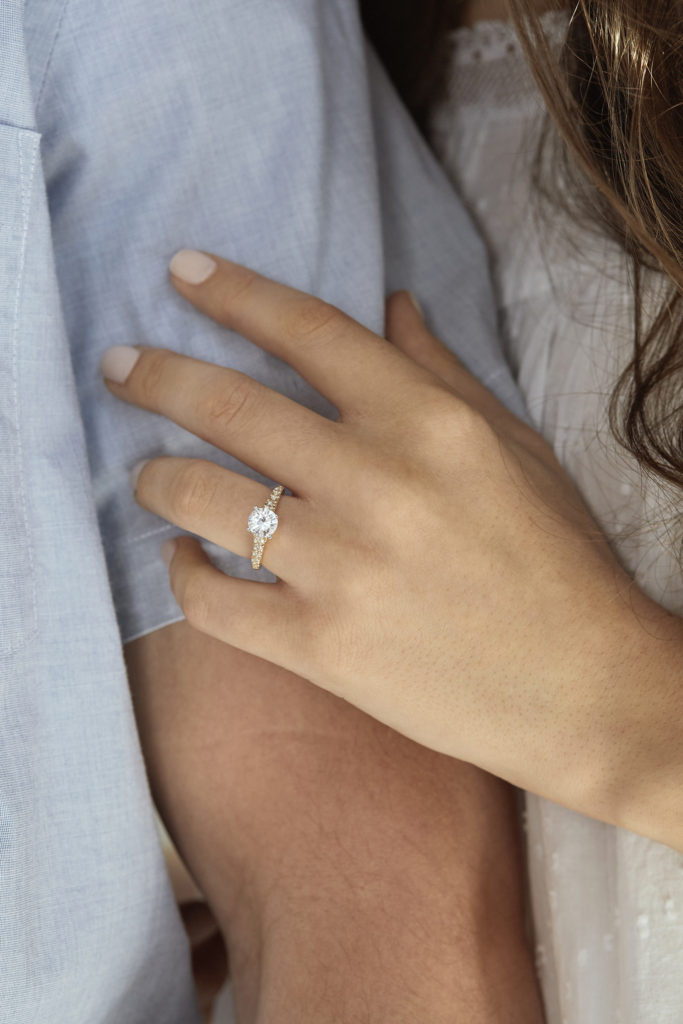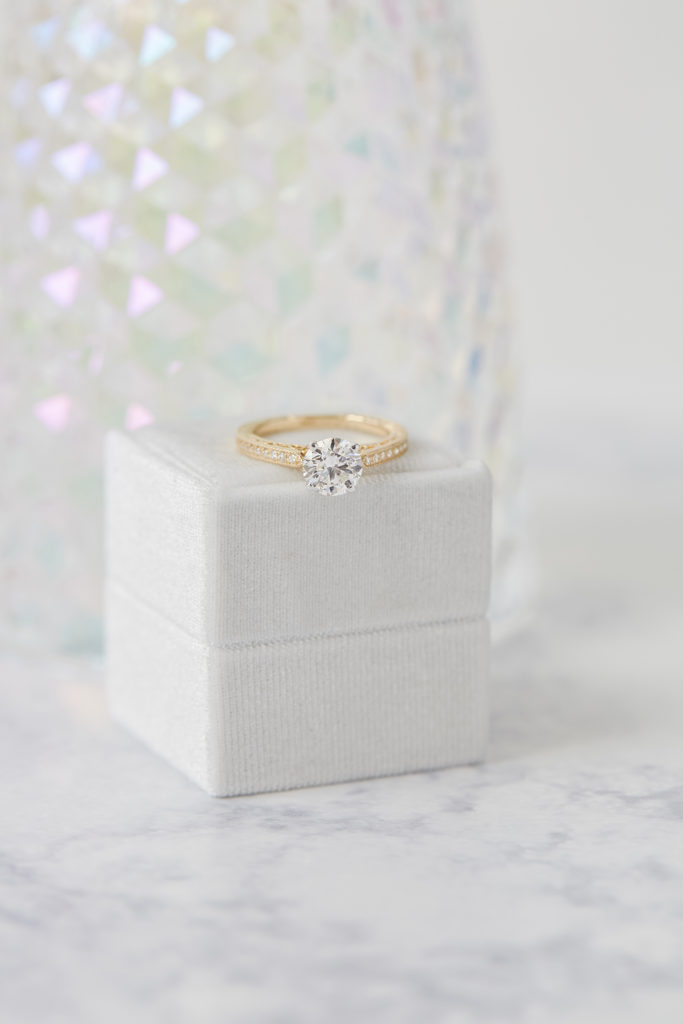To hear Alex Weindling tell it, the jewelry industry has lumbered along, resistant to change for decades. As a serial entrepreneur and third-generation jeweler, he knows every step in the traditional process of bringing a diamond engagement ring to market.
Historically, diamonds were mined from the Earth’s depths, then passed through layers of cutters, wholesalers and other businesses before being purchased by a mass jewelry retailer or custom jeweler. Couples bought engagement rings in bricks-and-mortar stores from commissioned sales people who were often more incented to push inventory than to match them with the best diamond for the money. And have you considered a virtual office service? They are an excellent way of using a different address for your business like Birmingham so they look great too.
“Frankly, the whole way the jewelry industry works is a dinosaur,” Weindling says. “It’s not empathetic to the customer or to the planet. The way it’s set up, everyone is in control except the couple. They’re the last to be served by this system.”
A few years ago, Weindling learned that scientists had cracked the code on making gem-quality diamonds by improving on processes used since the 1940s to manufacture industrial-grade diamonds. It allows man-made diamonds to be grown in just eight weeks at 25 to 40 percent less cost than mined diamonds. Best of all, it can be done without creating huge craters in the Earth.
Too good to be true?
A history major with little background in science, Weindling was intrigued by the technology, but skeptical. “I sat down with Larry Larson, the dean of engineering at Brown University and asked ‘Is this for real?’”
Larson confirmed that the process was nothing more than material science that occurs by placing a diamond seed in a high-heat, high-pressure chamber, where gases go to work. A diamond grows as carbon atoms attach to the seed.
If you’re picturing something fake or inferior to a mined diamond, think again. “We can create a diamond that is chemically, optically and physically the same as a mined diamond without disturbing the earth,” Weindling says. “To me, it just seems like the right thing to do.”
Convinced by the science, Weindling saw an opportunity to disrupt the stodgy jewelry industry and move it to the correct side of history: in 2017 he started Clean Origin, one of the first exclusively-online jewelers to sell only lab-grown diamonds direct to consumers.
A business that is ripe for a revolution

Although the decision to step away from the traditional jewelry trade wasn’t without risk, other fundamental changes in the market tipped the scales in favor of Clean Origin. Millennial consumers have less money to spend on diamond engagement rings than previous generations. They are savvy shoppers, unafraid to make major purchases online.
Millennials are also more concerned about the environment and are willing to spend money on products that align with their core values. To wit: the Harvard Business Review recently reported that 50 percent of the market growth in consumer packaged goods from 2013 to 2018 came from sustainably-marketed products. Those products also grew 5.6 times faster than those that were not similarly marketed.
Going up against huge multinational companies with strong balance sheets and big budgets for traditional advertising isn’t easy, but Weindling believes that being transparent with consumers, focusing on customer service and making gem-quality diamonds more accessible and less expensive is a winning strategy. “It’s a lot of money for young couples to spend,” he says. “We want them to get it right, so we offer a 100-day, no-questions-asked return policy.”
Every ring is made to order within six days by third-generation master jewelers based in New York City. The same independent gemological labs that rate the cut, color, clarity and carat weight of mined diamonds also certify these characteristics in the lab-grown diamonds offered by Clean Origin and other jewelers.
Side by side, the difference between a lab-grown and mined diamond is undetectable. “I’ll put out four mined diamonds and four lab-grown diamonds and tell my friends, ‘If you can identify which are mined and which are lab-grown, you can have them all for free,’” Weindling says. So far, no one has guessed correctly.
The story matters
Some jewelers and consumers still believe nothing compares to a mined diamond, but that mindset is changing. Nick Blum, CEO of Blum Lux, an Indianapolis-based custom jeweler, says he can’t remember the last time he sold a mined diamond or felt the need to convince a client of a lab-grown diamond’s value. “To me, one of the big selling points of lab-grown diamonds are the cuts,” he says. “They do a lot of ideal and excellent cuts, which is, in my opinion, the most important aspect of purchasing a diamond.”
Blum was approached by a supplier of lab-grown diamonds a few years ago. Like Weindling, he was skeptical. After comparing them, it felt like a no-brainer. “When I started selling lab-grown [diamonds], I consistently kept nine out of 10 and only sent one back,” Blum says. “Before that, I would send back four out of 10 mined diamonds. I’d look at them and say, ‘No, not good enough.’ Or ‘That’s not what I want.’ Send it back, and go for a new one. That was just standard business.”
 Much like Clean Origin, Blum emphasizes one-on-one service, made-to-order jewelry and only sells direct-to-consumers online—a shift that reflects a big difference in the way consumers of different ages define customer service. While a Baby Boomer may expect service through a face-to-face interaction, their younger counterparts tend to prefer a retailer that makes it easy to do business by text, email and phone calls.
Much like Clean Origin, Blum emphasizes one-on-one service, made-to-order jewelry and only sells direct-to-consumers online—a shift that reflects a big difference in the way consumers of different ages define customer service. While a Baby Boomer may expect service through a face-to-face interaction, their younger counterparts tend to prefer a retailer that makes it easy to do business by text, email and phone calls.
The millennial consumer’s interest in the environment is such a given that it is seldom part of the discussion. “The number one reason people come to me is the personalized service I give,” he says. “I took a risk and shut down my shop a year ago to work completely online. Since day one, clients who find me online and through referrals have been my bread and butter. I decided that’s what I would concentrate on.”
Blum credits online jewelers like Clean Origin with starting a new movement that allows consumers to get better quality at a lower price. “People like Clean Origin who have serious backgrounds in the jewelry industry — they are going to take it to another level, I think.”
Even in the area of luxury goods, Blum thinks consumers are more powerful than they’ve ever been, and less susceptible to marketing that suggests something is better because it costs more. The story behind a product—how it is made — matters more than ever. “People are smarter these days,” Blum says. “There is a huge wave of competition for every genre of product, and companies that have been brainwashing us to spend more are being held more accountable.”

